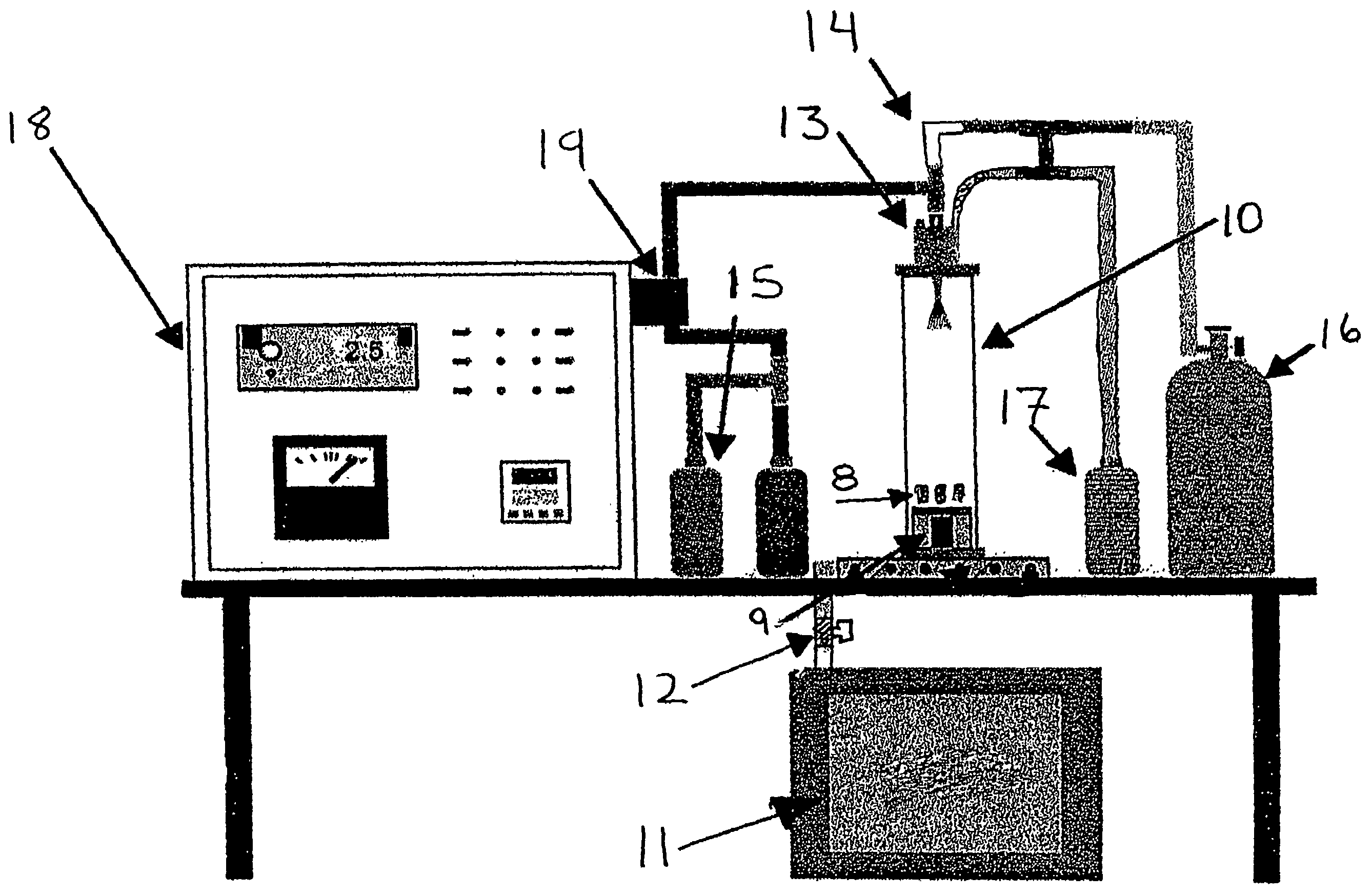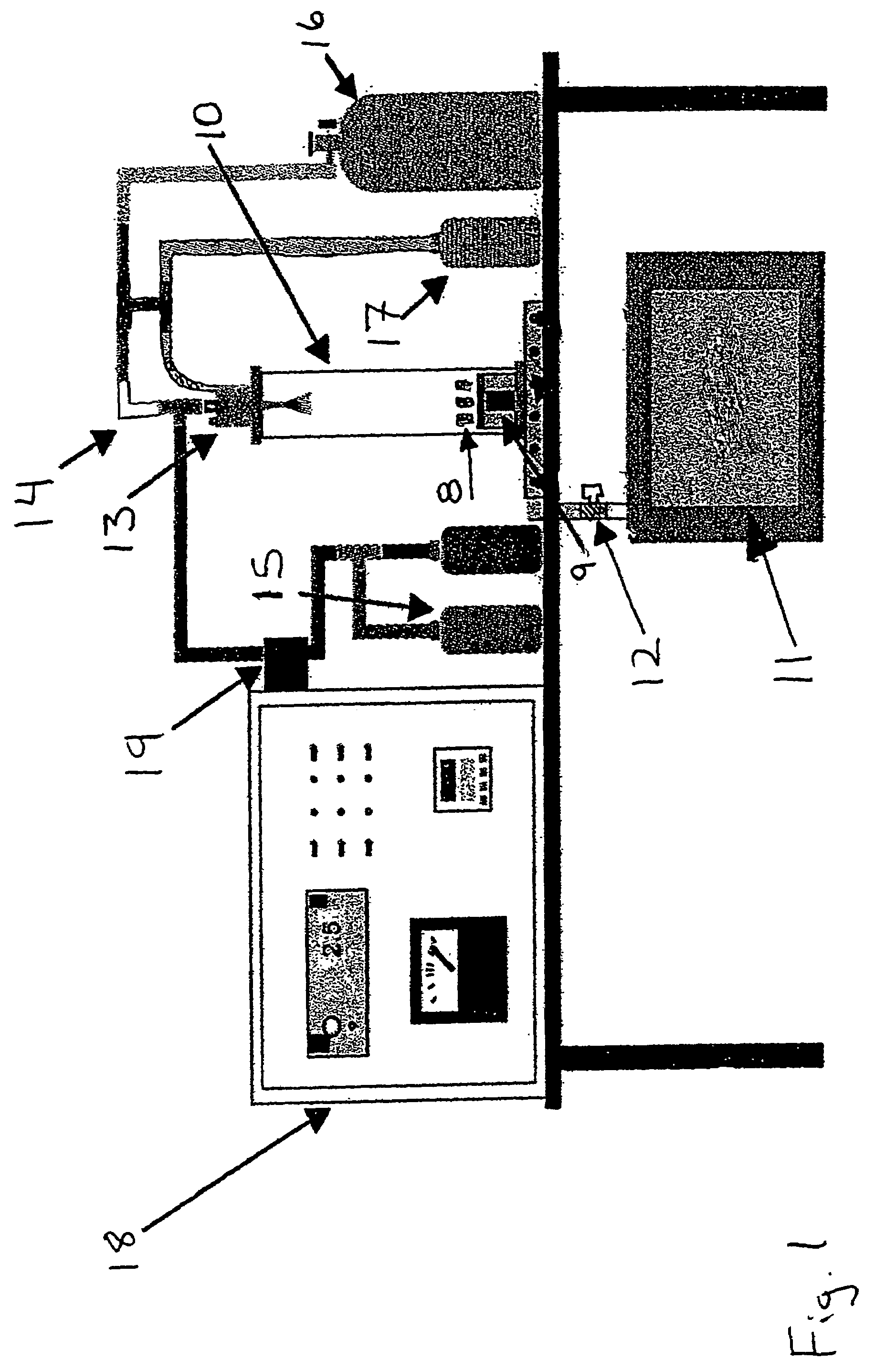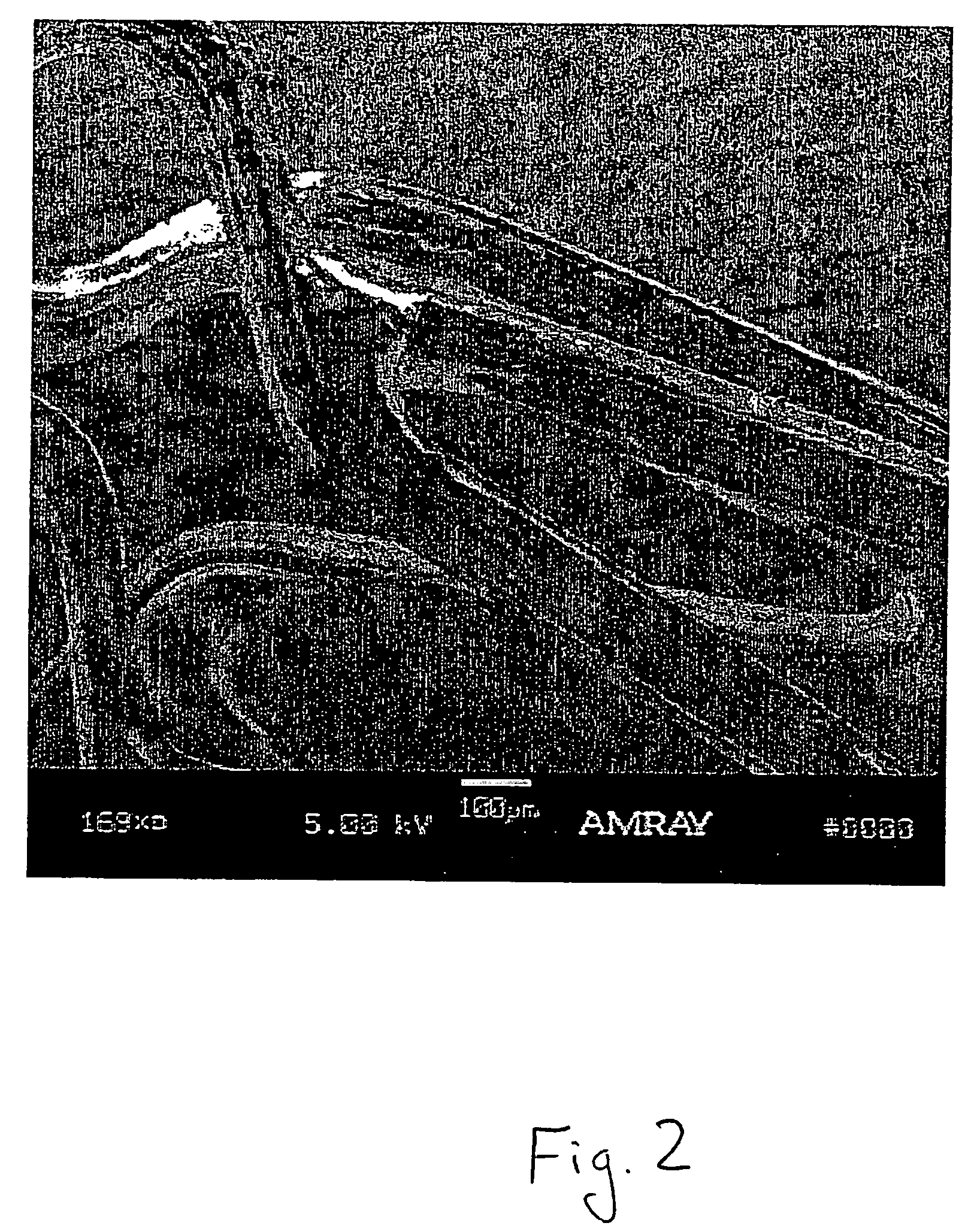Process for coating three-dimensional substrates with thin organic films and products
a technology of three-dimensional substrates and organic films, applied in the direction of packaging foodstuffs, mechanical vibration separation, packaging goods, etc., can solve the problems of complex implantation of stents within arteries or veins, unsatisfactory solution of the process of coating a three-dimensional shape, such as a stent, and the reaction of the body to the implanted devi
- Summary
- Abstract
- Description
- Claims
- Application Information
AI Technical Summary
Benefits of technology
Problems solved by technology
Method used
Image
Examples
Embodiment Construction
[0023]The present invention will now be described in detail for specific preferred embodiments of the invention. These embodiments are intended only as illustrative examples and the invention is not to be limited thereto.
[0024]The most critical processing conditions are the type of nozzle selected, the ultrasonic frequency selected for the ultrasonic nozzle, the choice of a volatile liquid, the choice and concentration of organic compounds mixed with the volatile liquid, the pressure within the enclosure, the temperature within the enclosure, and the timing of changes in the processing conditions.
[0025]In a first example of the invention, it was desired that a thin film comprising an organic compound and a medication be completely continuous and conformal on the surface of a three-dimensional substrate; therefore, it was desirable that the micro-droplets had retained a significant portion of the volatile liquid upon impact with the substrate, allowing the liquid film to wet the surf...
PUM
| Property | Measurement | Unit |
|---|---|---|
| pressure | aaaaa | aaaaa |
| pressure | aaaaa | aaaaa |
| frequency | aaaaa | aaaaa |
Abstract
Description
Claims
Application Information
 Login to View More
Login to View More - R&D
- Intellectual Property
- Life Sciences
- Materials
- Tech Scout
- Unparalleled Data Quality
- Higher Quality Content
- 60% Fewer Hallucinations
Browse by: Latest US Patents, China's latest patents, Technical Efficacy Thesaurus, Application Domain, Technology Topic, Popular Technical Reports.
© 2025 PatSnap. All rights reserved.Legal|Privacy policy|Modern Slavery Act Transparency Statement|Sitemap|About US| Contact US: help@patsnap.com



